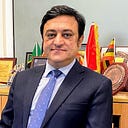Surgical Treatments for Degenerative Disc Disease: Procedures and Considerations
Degenerative Disc Disease (DDD) is a condition that occurs when the intervertebral discs, which act as cushions between the vertebrae, start to wear down. This can lead to pain, reduced mobility, and other complications. While non-surgical treatments like physical therapy and medications are often the first line of defence, surgery becomes a consideration when these treatments fail to provide relief. Here, we explore the various surgical treatments for DDD, the procedures involved, and important considerations.

Understanding Degenerative Disc Disease
Degenerative Disc Disease is a natural part of ageing, but it can also result from trauma or repetitive stress. The discs lose water content and elasticity, causing them to shrink and lose their ability to absorb shock. This degeneration can lead to herniated discs, spinal stenosis, and other spinal issues.
Symptoms of Degenerative Disc Disease
- Chronic back or neck pain
- Pain that worsens with sitting, bending, or lifting
- Numbness and tingling in the extremities
- Weakness in the muscles of the legs or arms
When these symptoms become severe and debilitating, it is crucial to consult the best neurosurgeon in India to explore surgical options.
Surgical Options for Degenerative Disc Disease
There are several surgical procedures available to treat DDD, each with its own benefits and risks. The choice of procedure depends on the severity of the disease, the specific symptoms, and the overall health of the patient.
Spinal Fusion
Spinal fusion is one of the most common surgeries for DDD. It involves permanently connecting two or more vertebrae to reduce motion and alleviate pain.
Procedure:
- The surgeon removes the damaged disc.
- Bone grafts are placed between the vertebrae.
- Metal plates, screws, or rods are used to hold the vertebrae together while the bone heals.
Considerations:
- Reduces flexibility in the affected part of the spine.
- Can take several months for the bones to fuse completely.
- May require physical therapy post-surgery.
Artificial Disc Replacement
Artificial disc replacement is an alternative to spinal fusion that aims to maintain more natural movement in the spine.
Procedure:
- The damaged disc is removed.
- An artificial disc made of metal or biopolymer is inserted in place of the natural disc.
Considerations:
- Preserves more spinal flexibility compared to fusion.
- Faster recovery time.
- Not suitable for all patients, depending on the location and severity of the degeneration.
Laminectomy
A laminectomy involves removing part of the vertebral bone called the lamina to relieve pressure on the spinal cord or nerves.
Procedure:
- The surgeon makes an incision over the affected area.
- The lamina and any bone spurs or tissue pressing on the nerves are removed.
Considerations:
- Often used to treat spinal stenosis, a common complication of DDD.
- Can be done in conjunction with spinal fusion.
Foraminotomy
Foraminotomy is a procedure to enlarge the openings (foramina) where nerve roots exit the spinal canal.
Procedure:
- The surgeon removes bone or tissue that is compressing the nerve roots.
Considerations:
- Can alleviate pain, numbness, and weakness.
- Sometimes performed along with other surgeries like spinal fusion.
Discectomy
A discectomy involves removing part or all of a damaged disc to relieve nerve pressure.
Procedure:
- A small incision is made to access the spine.
- The damaged portion of the disc is removed.
Considerations:
- Often done as a minimally invasive procedure.
- Shorter recovery time compared to other surgeries.
Choosing the Right Surgeon
Selecting the best neurosurgeon in India is crucial for a successful outcome. Factors to consider include the surgeon’s experience, success rates, patient reviews, and the hospital’s facilities. A skilled neurosurgeon can recommend the most appropriate procedure based on individual patient needs and ensure the best possible results.
Recovery and Rehabilitation
Recovery from spinal surgery varies depending on the type of procedure performed. Generally, patients can expect:
- Hospital stay of a few days.
- Gradual return to normal activities within a few weeks to months.
- Physical therapy to strengthen the muscles and improve mobility.
- Regular follow-up visits to monitor progress.
Tips for a Smooth Recovery:
- Follow all post-operative instructions from the surgeon.
- Engage in prescribed physical therapy.
- Avoid heavy lifting and strenuous activities until cleared by the doctor.
- Maintain a healthy diet to support healing.
Conclusion
Surgical treatments for Degenerative Disc Disease offer hope for those suffering from chronic pain and reduced mobility. With advancements in medical technology, procedures like spinal fusion, artificial disc replacement, and minimally invasive surgeries can significantly improve quality of life. For the best outcomes, it is essential to consult the best neurosurgeon in India, such as Dr Arun Saroha at Max Hospitals, who has extensive experience and expertise in treating complex spinal conditions. By understanding the available surgical options and considerations, patients can make informed decisions and embark on a path to recovery and relief.
